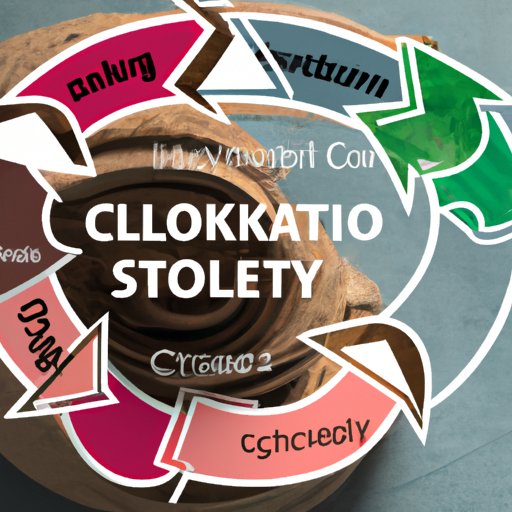Introduction
In recent years, there has been an increasing focus on sustainability and environmental awareness in the fashion industry. One of the most notable movements in this area is the concept of “circular fashion”, which seeks to reduce the environmental impact of fashion production and consumption. This article will explore what circular fashion is, how it can benefit the environment, and its potential economic and job implications.
An Overview of Circular Fashion: What It Is and How It Can Help the Environment
Circular fashion is a new approach to fashion production and consumption that seeks to reduce the environmental impact of the industry. The concept is based on the idea of creating a closed-loop system, where materials are reused and repurposed instead of being discarded. The goal of this system is to reduce waste and create a more sustainable fashion industry.
The benefits of circular fashion for the environment are numerous. By reducing the amount of waste produced by the fashion industry, it helps to conserve natural resources and reduce pollution. Additionally, by encouraging the reuse of materials, it helps to reduce the demand for new materials, which can have a positive effect on global warming.

Exploring the Benefits of Circular Fashion for Consumers
Circular fashion also offers numerous benefits for consumers. One of the most obvious advantages is the potential for cost savings. By reusing materials instead of buying new ones, companies can reduce their costs, which in turn can lead to lower prices for consumers. Additionally, circular fashion offers more sustainable options for those looking to reduce their environmental footprint.
Another benefit of circular fashion is increased accessibility. By making it easier for consumers to access pre-owned or upcycled clothing, it opens up the market to those who may not have been able to afford new items. This can help to promote social justice and ensure that everyone has access to fashionable and affordable clothing.

Looking Into the Future: Exploring the Possibilities of Circular Fashion
The popularity of circular fashion is growing, and it is likely that this trend will continue in the future. Companies are increasingly recognizing the need to adopt more sustainable practices, and as a result, they are investing in innovative design and production techniques that make use of existing materials. Additionally, technology is playing an important role in promoting circular fashion practices, such as automated sorting systems that can quickly identify usable materials.

The Impact of Circular Fashion on the Economy and Job Creation
The adoption of circular fashion practices could also have a positive impact on the economy and job creation. As the demand for sustainable fashion increases, companies may need to hire additional staff to meet this demand. Additionally, the development of innovative production techniques could lead to the creation of new jobs, such as designers specializing in circular fashion.
Conclusion
In conclusion, circular fashion is a new approach to fashion production and consumption that seeks to reduce the environmental impact of the industry. This article has explored the various benefits of circular fashion for both the environment and consumers, as well as its potential economic and job implications. As the demand for sustainable fashion continues to grow, it is likely that circular fashion will become more popular, leading to greater opportunities for both businesses and individuals.
Overall, circular fashion can be seen as a promising solution to many of the environmental problems facing the fashion industry. Through its emphasis on reuse and repurposing of materials, it has the potential to reduce waste, conserve natural resources, and create more sustainable fashion options for consumers. Additionally, it could lead to increased job opportunities and economic growth.
(Note: Is this article not meeting your expectations? Do you have knowledge or insights to share? Unlock new opportunities and expand your reach by joining our authors team. Click Registration to join us and share your expertise with our readers.)
